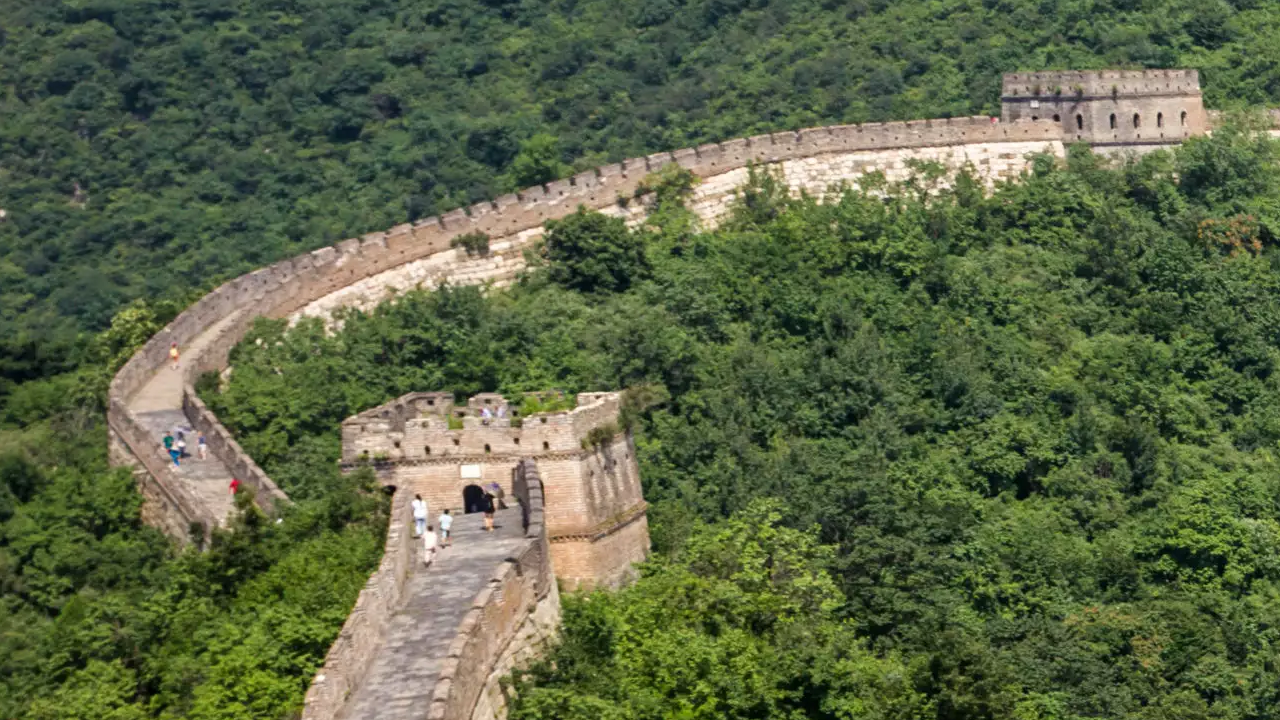Stretching across northern China like a colossal dragon, the Great Wall (长城, Chángchéng) is one of the world’s most awe-inspiring architectural wonders. Built over centuries to protect ancient China from invasions, it stands as a testament to human perseverance, engineering ingenuity, and cultural identity. This monumental structure, often called the "Longest Wall in the World," attracts millions of visitors annually, offering breathtaking views, rich history, and unforgettable experiences.

Facts About the Great Wall
1. It’s Not a Single Continuous Wall
The Great Wall comprises numerous segments built by different dynasties (primarily the Qin, Han, Ming) over 2,300 years.
Early walls were made of rammed earth, wood, and stone, while later sections (like those from the Ming dynasty) used bricks and watchtowers.
2. Length and Scale
Total Length: Approximately 13,170 miles (21,196 km)—enough to circle the Earth nearly one-third!
Ming Dynasty Wall: The most well-preserved section, spanning about 5,500 miles (8,850 km).
3. Purpose Beyond Defense
Military Fortress: Originally built to guard against nomadic tribes (e.g., the Mongols).
Symbol of Power: Represented imperial China’s dominance and technological prowess.
Trade Control: Later served as a customs barrier and communication network.
4. Construction Challenges
Labor Force: Soldiers, prisoners, and local farmers built the wall manually, often under harsh conditions.
Materials: Bricks, tamped earth, and stone were used depending on the region’s resources.
Deaths and Legends: Folklore claims workers’ bones were mixed into mortar, though this is debated.
5. Visibility from Space
Contrary to popular myth, the Great Wall cannot be seen from low Earth orbit without magnification. Its faintness blends with natural terrain.
6. Key Dynasties Involved
Qin Dynasty (221–206 BCE): Unified China and built the first connected wall.
Han Dynasty (206 BCE–220 CE): Extended the wall into Central Asia.
Ming Dynasty (1368–1644): Reinforced and beautified it into its recognizable form.
7. Unique Features
Watchtowers: Built at intervals for signaling, shelter, and troop storage.
Crenellations: Parapets with battlements for defenders to shoot arrows.
Beacon Towers: Used smoke or fire to alert of enemy attacks.
8. Modern-Day Significance
UNESCO World Heritage Site: Recognized since 1987 for its cultural and historical value.
Tourist Attractions: Popular sections include Mutianyu, Badaling, and Jinshanling, offering hiking, photography, and cultural insights.
Environmental Threats: Erosion, weathering, and human activity threaten its preservation.
9. Fascinating Trivia
The Great Wall is the only human-made structure visible from space without aid (from low orbit, under ideal conditions).
It’s said that "He who has not been to the Great Wall is not a true man" (不到长城非好汉, Bù dào Chángchéng fēi hǎohàn), a famous Chinese proverb.
Animals on the Wall: Deer, rabbits, and birds are sometimes spotted in remote sections!
Why Visit the Great Wall?
Breathtaking Scenery: Views of rugged mountains, valleys, and forests.
Historical Immersion: Explore ancient watchtowers and learn about battles fought along its paths.
Adventure Activities: Hiking, camping, or even motorbiking on less-crowded sections.
The Great Wall is more than a structure—it’s a living history book, a symbol of China’s resilience, and a global icon of human achievement. Whether you stand atop a watchtower, walk its sunlit paths, or gaze at its silhouette against the horizon, it’s an unforgettable experience that connects you to China’s ancient past and enduring spirit.
Plan Your Visit:
Best Time: Spring (April–May) or autumn (September–October) for mild weather and clear skies.
Avoid Crowds: Visit early morning or during weekdays to dodge tourist throngs.
Safety Tips: Wear sturdy shoes, bring water, and stay on marked trails.


